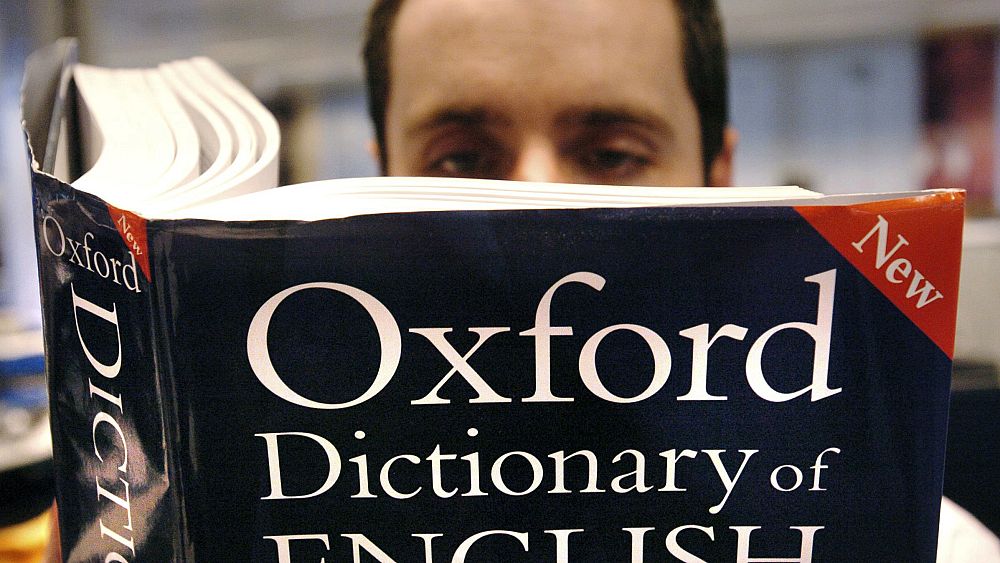
The Oxford English Dictionary, recognised worldwide as the principal English language dictionary and home to 600,000 words anthologised over 1000 years, has published the first of its four updates for 2023.
This month's update includes more than 1400 revised entries and the addition of 700 new words such as ‘deepfake’, ("a video of a person that has been digitally altered so that they appear to be someone else") and ‘groomzilla’, ("a man thought to have become intolerably obsessive or overbearing in planning the details of his wedding") – the long-awaited companion to ‘bridezilla’.
Amongst these 700 newly-added words are 47 new words and phrases that English-speaking New Zealanders either use or hear in their daily lives such as ‘chur’ - which is similar to ‘cheers!’ and is colloquially used to express thanks or approval, and ‘kiwiness’ - a noun used to denote the quality of belonging to New Zealand.
Most of these new words are from the indigenous language of New Zealand’s original settlers, Te Reo Māori, which has been undergoing a cultural and linguistic revival in New Zealand - or rather Aotearoa (the country’s name in Te Reo Māori, literally meaning ‘the long white cloud’).
A petition of 70,000 signatures was presented to the parliament in June 2022 to change the country’s official name to Aotearoa, which already appears in New Zealanders’ passports, radio and television news in the country, and in its national anthem.
Amidst this climate, the Oxford English Dictionary (OED) has added more Māori words to its collection to recognise Te Reo Māori’s "profound and lasting impact on English in New Zealand," according to a statement from the Oxford University Press, the OED’s publisher.
Māori words in the Oxford English dictionary's March 2023 edition
The oldest Māori word in this new update is 'whenua' meaning "land or piece of land belonging to a Māori person or native land of a Māori group". Its first use in the English language can be traced back to the British explorer, Captain James Cook’s journal, from the 18th century.
Other words included in this update also refer to concepts of Māori land ownership and sovereignty, such as ‘rohe’ which refers to "a Māori tribal boundary", first used in 1942, and ‘rangatiratanga’ transliterally meaning "chieftain" or "nobility" but specifically used to refer to the right to self-determination of the Māori people.
Several of the nouns in this new addition are also related to Māori customs such as ‘powhiri’ (a Māori welcoming ceremony), 'koha', defined in the OED as "a gift; an offering, donation, or contribution", and ‘wharekai’, defined as "a building in a Māori settlement or community".
"The OED will record even more Māori contributions to the lexicon as it continues to monitor the evolution of English in this part of the world," says the Oxford University Press.
Who are the Māori?
The Māoris are indigenous Polynesian people who have inhabited mainland New Zealand since 1320 when their ancestors are believed to have arrived to the island country in fleets of large canoes called ‘Wakas’ (in the Te Reo Māori language) from a mythical homeland called Hawaiki.
Over centuries of isolation from the rest of the world, the Māori developed their own culture, language, mythology, and craft, which are distinct from other Polynesian groups who live on other islands in the Pacific.
Early contact with Europeans began in the 18th century - ranging from beneficial trade to violent encounters. This was the first time that the various tribes living in New Zealand started identifying themselves with one name - Māori meaning ‘ordinary’.
Relations between the Māori and European settlers - who the Māori referred to as ‘Pakeha’ - remained mostly cordial during the early colonial period until 1860 when the rising number of settlers and disputes over land brought from the Naori led to the New Zealand Wars (1845-1872).
Following the wars, many Māori lands were taken by the Pakeha who tried to assimilate the Māoris into their culture by banning the use of the Te Reo Māori language and replacing Tohungas (expert practitioners of a particular skill especially medicine) with Western medicine.
By 1896, New Zealand’s Māori population was 42,113 compared to a Pakeha population of 700,000. The Māori population was also hit intensely by the 1918 influenza pandemic when death rates among the Māori were 4.5 times higher than the Pakeha. Nonetheless, the Māori population recovered in the 20th century, and underwent a cultural revival in the 1960s. Influential Māori leaders fought for social justice against historical grievances leading to the New Zealand government signing many treaty settlements, especially land deals.
The Māoris are now a minority in New Zealand, numbering up to 892,200 - or 17.2% of the total population according to a June 2022 survey. Decades of co-existing with the Pakeha have led to the assimilation of words from Te Reo Māori into the English language spoken in New Zealand.
Common Māori words used by both Māori and Pakeha English-speakers in New Zealand include aroha (love), iwi (tribe), kai (food), koha (gift/ present), and maounga (mountain). Phrases such as “kia ora e hoa” (a Māori greeting meaning ‘hi mate’) is also increasingly being used in shops, restaurants, and offices.
The Oxford English Dictionary (OED) officially recognizes many of these words and phrases and added the greeting, ‘Kia Ora e Hoa’.
No comments:
Post a Comment